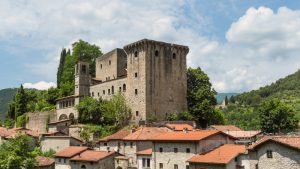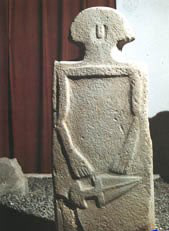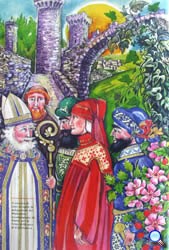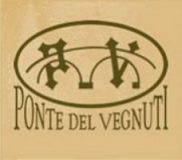Of great interest
One Hundred Castles amid the Hamlets

Fivizzano Castle in Tuscany, Italy.
In a short stretch of land nature presents an extraordinary variety of landscapes: high grasslands, green pastures, rolling hills rich in vineyards and a long trail of villages dominated by 1mighty castles.
It’s sufficient to drive along the roads through the hamlets to understand right away that you are in a place out of time, in a place in which the strong sense of beauty is due to the presence of these one hundred impressive castles.
Some destroyed by centuries old abandon, others better preserved, which immediately recall past times, made up of brave knights, beautiful princesses, powerful lords and faithful servants about which to recount legends.
In the valleys the mysteries of courts, lost loves or of grim places in which mysterious abductions occurred are still jealously hidden … It is also said that on moonless nights shadowy ghosts come out and that they populate those valleys, on whose peaks are nestled the impenetrable forts.
An ancient and substantial heritage of tradition and legend unravels along the path of the hundred castles that from Fosdinovo to Pontremoli, from Fivizzano to Aulla and throughout the Lunigiana preserve an extraordinary casket of artistic and cultural memories.
And not only… If you cross the medieval bridges and pass under the arcades of the ancient market, if you walk step by step on these paving stones, you will feel the soul of this land entering inside you.
Tranquillity, peace, silence: here time seems to have been crystallised.
Everywhere on these streets you will be able to hear the echoes of a far off life, made of simplicity: here shopkeepers, tailors, apothecaries, cobblers and vendors once set up shop and built their homes…
Stele statues: Some stone or mysterious statues

Allure and mystery blend continuously here. The atmosphere is permeated by an aura of recollections of a world full of secrets and interrogatives.
On the intersection that links eastern Liguria to Emilia Romagna and Tuscany, in a not so remote corner of land, starting from the first half of the nineteenth century a very precious cultural and artistic “treasure” has been found.
The Stone Statues (Steles) are monuments in sandstone, of anthropomorphous nature, to be dated back to the period between prehistory and the most ancient history.
Was it by chance that this mysterious stone inheritance was left to us?
This is but one of the many questions that have arisen about the unknown populations who lived on this land before us.
Indeed, together with the Stone Statues (Steles), many, many questions have been raised. The hand of what creator hides behind these fascinating forms of art? Or more simply which is the population that can boast having built these monuments? What are these figures, with sometimes masculine sometimes feminine features, trying to represent? Heroes of the time or more likely particular forms of divinity? What purpose did the Stone Statues (Steles) serve?
Unique aspects due to their peculiar characteristics and traits shared with other cultural areas alternate, as if to almost wish to further complicate this dense maze of questions about the Stone Statues (Steles).
It is curious to note that recently in this Italian region unknown flying objects have been seen during the day and globes of light at night. Perhaps a similar phenomenon also happened in the past? Couldn’t the Stone Statues (Steles) therefore be stone evidence of the repeated manifestations that took place? In this case one would no longer be dealing with a celestial divinity, but with real and true extraneous presences coming from who knows where… That is not all. Just think of the lunar shape of certain headdresses of these sculptures: it is inevitable to reconnect them with the moon (Luna in Italian), just as the name of the locality: Lunigiana. Simple coincidence? Or…
The 60 Stone Statues (Steles) discovered up to now are just a small number compared to all those that remain buried. And perhaps together with the latter remain buried all the answers that could solve all our doubts about this mysterious civilization, which with all these interrogatives is able to unleash a very strong appeal.
The Via Francigena… and other roads

There are many names that can be used to define this area: land of nature, water, flavours, art… but above all… land of roads!
Yes, because across this soil passes not only the ancient Via dei Franchi, commonly known as the Via Francigena…
Once the faithful and religious who, moved by a very strong sense of devotion, undertook this very long walk, to reach the tomb of St. Peter in Rome, might meet on their way other pilgrims heading for Spain along the Cammino di Santiago de Compostela.
Not only. There is a third road here which intertwines with the first two: this is the Via del Volto Santo (Holy Face) di Lucca.
The most precious testimony turns out to be that of Sigeric who in 990 travelled along the Via Francigena from the county of Kent to Rome, in order to receive his consecration as archbishop of Canterbury from the Pope.
Thus the Lunigiana enhances it own historical-cultural heritage, boasting on its land the meeting point of ancient roads, once trodden by all those medieval knights, lords, monks and believers who make up for us today a good part of our vast heritage of traditions.
Even the greatest poet of all time passed by here and left evidence of his transit: indeed, in Canto VIII of the Purgatorio, Dante sang the praises of the imperial Malaspina, who had very generously hosted him on their majestic estate on the Via Francigena.
Just as there are sacred stopovers along this route that punctuate the length and the duration, one is led to believe that here there were the logistic bases for the Templars.
An aura of mystery has always surrounded the figures of the Soldiers of Christ, some of whom, having escaped the stake, moved around Europe where they founded a secret order…
The settlements of the Templars can be found all along the Via Francigena. But what purpose do these buildings, which are nothing more than vestiges of the mysterious knights, serve? We have already underlined the sacredness as well as the importance of hospitality in the Lunigiana, with the example given to us by Dante: so the buildings, abbeys and hospitals of the same Templars had the aim of supplying a base for all those wayfarers who needed to rest their limbs before starting off on their journey once again.
These paths, project us into a dimension out of time: indeed, at the crossing of these roads intersect in turn, between literature and history, the great European myths of epic-chivalrous nature, such as the Breton, the Charlemagne and the Nibelung cycles.
Today there are a huge number of pilgrims (and not) who undertake to follow this route, thereby crossing places not only enchanting for their nature but also extremely evocative, because they are loaded with one of the most consolidated traditions in Europe.
Go Back | The apartments | Great Surrounding | Home Page




